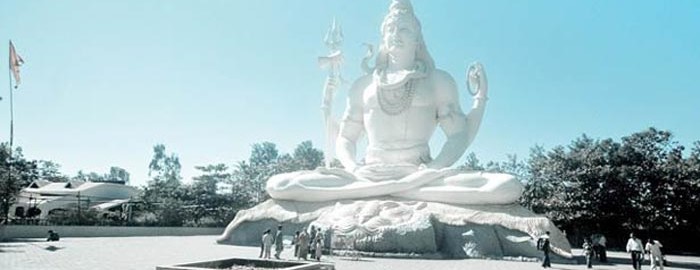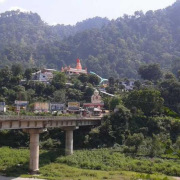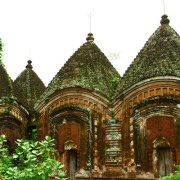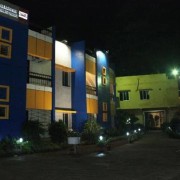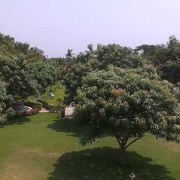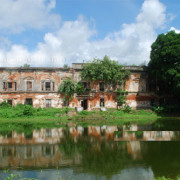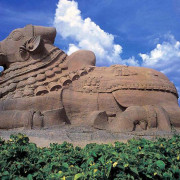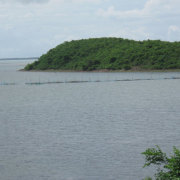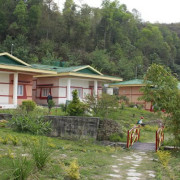Jabalpur, Madhya Pradesh – An ideal holiday destination having multiple tourist attractions
The River Narmada, too, is a beautiful woman, as most rivers are, in India. But though she passes close to Jabalpur, she shyly avoids the town. Or, perhaps the town has grown away from her, and its own past, consequently, there is really very little in Jabalpur town to capture the attention of the visitor. But a short drive out of the long narrow plain holding the town, brings one to sub-montane lands: rocky, rugged and a natural bulwark against attackers. One of the more intriguing monuments to Jabalpur’s past is the Madan Mahal Fort. On a historical note, a pleasure resort and capital of the Gond Kings during the 12th century, Jabalpur was later the seat of the Kalchuri dynasty. The Marathas held sway over Jabalpur until 1817, when the British wrested it from them and left their impression on the spacious cantonment with its colonial residences and barracks. Today Jabalpur is an important administrative centre, a bustle with commercial activity.
The commercial town of Jabalpur was once the capital of Gond and Kalchuri dynasty in the 12th century. The beautiful River Narmada which is a beautiful woman passes close to Jabalpur shyly avoiding the town. A short drive out of the long narrow plain holding the town, brings one to sub-montane lands: rocky, rugged and a natural bulwark against attackers. Jabalpur is a pleasure resort dotted with numerous visiting spots and a perfect holiday destination.
Places to see at Jabalpur: Jabalpur has quiet a lot of tourist attractions.
Rani Durgavati Memorial And Museum
Dedicated to the memory of the great Queen Durgavati, it is her memorial and museum which houses a fine collection of sculptures, inscriptions and prehistoric relics.
Tilwara Ghat
It is here that Mahatma Gandhi’s ashes were immersed in the Narmada. The Ghat also forms the venue of the open session of the Tripuri Congress in 1939. The 12th century Mala Devi Mandir, Pisan Hari Jain Temples and Roopnath are some of the other sites in and around Jabalpur which merit a visit.
Madan Mahal Fort
Built by the Gond ruler, Raja Madan Shah, in 1116 atop a rocky hill, the fort dominates the skyline and provides a panoramic view of the town and the country side around it. Sangram Sagar and Bajnamath: These medieval constructions were built by the famous Gond King, Sangram Shah, in between the period of 1480-1540.
Sangram Sagar And Bajnamath
These medieval constructions were also built by the famous Gond King, Sangram Shah, between 1480-1540.
Hanumantal Jain Mandir
Built in the 19th century, this temple has 22 shrines (vedis), making it the largest independent Jain temple in India. The images range from the Kalchuri period to modern times. The main room with glasswork was built in 1886 by Bholanath Singhai, who helped initiate the first two Hitkarini Sabha schools. This room contains the only image of the Jain goddess Padmavati, that is still worshiped in central India. It is the main Jain temple in Jabalpur, and the annual Jain procession on the birthday of Lord Mahavira, starts thereand terminates at Bada Fuhara. Daily shastra-sabha and evening classes are held.
The Jackson’s Hotel and Royal Hotel
The Jackson’s Hotel was the retreat of the European elite in the British period. Kipling stayed here when he visited Jabalpur and comments on its “obsequious servants and cooks who understood British cooking.” The original neoclassical building of the hotel was built like a wedding cake as observed in 1887. During 1879–1882 it was called Jackson’s Family Hotel. Later the building was acquired by Raja Gokuldas and became residence of his granddaughter, the Jackson’s Hotel shifted to a bungalow style building. It was described as having a baronial appearance—a large white structure, with verandahs and ornamental columns, with deep verandahs built all round the Indian style buildings. In the 1950s, a person wearing a dhoti was expelled from a Christmas function at the hotel, leading to a complaint in the legislative assembly. Modern Narmada Jackson’s Hotel stands on the site on the later Jackson’s Hotel. The neoclassical building became Royal Hotel after it was sold by the Raj Gokuldas Family. The building of the Royal Hotel, now run down, is currently owned by the MPEB, it is about half-a-kilometer from Narmada Jackson Hotel.
Shaheed Smarak
A historic and monumental circular building in what was known as Gole-Bazar during British times and also as Wright Town, Shaheed Smarak has fresco-secco by Beohar Rammanohar Sinha and his colleagues from Santiniketan on the walls, balcony, parapet and dome. The central theme of the frescoes is India’s war of independence, fought between 16th and 19th century CE, starting with Rani Durgavati gearing-up against Moghul Emperor Akbar’s attack on Garha-Mandla (Jabalpur). Painted by Beohar Rammanohar Sinha. it is the first unambiguous painting ever made of Rani Durgavati. The provincial congress committee in the 1950s constructed an auditorium in the shape of a miniaturised version of Delhi’s Parliament House with a hall in the middle, a corridor running around it, and rooms for art and cultural activities including an Art Gallery. It is now looked after by a Public Trust.
Radha Krishna Temple-Complex
These Vaishnav and Shaiva temples in Jabalpur were constructed by the Beohar dynasty in c. 17–18th century CE and were the first temples in India to be opened to the Dalits in c. 1928–29 by Beohar Raghuvir Simha with his friends Ghanshyam Das Birla and Jamnalal Bajaj. The Radha Krishna temple houses the idols of Shri Radha-Krisna (given by Maharaja Chhatrasal of Panna to the ancestors of the Beohar dynasty, supposed to be replicas of the idols of Bhagwan Jugal Kishore ji), alongside Shri Ram-Janki ji and other gods and goddesses.
Kachnar City
A Vijayanagar suburb of Jabalpur, famous for a 76 feet (23 m) high Lord Shiva statue housing a cavern with replicas of Shivalingam from 12 important holy shrines of Lord Shiva all over the country.
Nearby attractions from Jabalpur: You can easily organize a tour to the places like:
Bhedaghat
Some 25 km from Jabalpur Bhedaghat includes the leading tourist attractions of Dhuandhar Falls and Marble Rocks. The boats leaving from Panchavati Ghat will take you to Dhuadhar Falls, created by the Narmada River. Savour the beauty of the meandering NarmadaRiver flowing between the two walls of the marble mountain rocks. As you cross the stones you will reach to the viewpoint. Adore the marvellous sight of the Dhuadhar falls. Rope-Way in Dhuandhar is also good experience for tourists. It is available from 10 a.m to 6 p.m.
Roopnath
Roopnath, 84 km from Jabalpur, is famous for a Lingam dedicated to Shiva and placed in the cleft of a rock.
Bilhari
14 km from Katni. Many pieces of ancient sculpture have been found here.
Nohta
81 km from Jabalpur, Nohta is believed to have been the capital of the Chandela kings in the early 12th century. About 2 km from the village of Nohta is a Shiva temple, where a Kartik fair is held annually. A few Jain ruins can also be seen in Nohta
Mandla and Ramnagar
95 km south of Jabalpur, Mandla is known for its fort which is situated in a loop of the Narmada river so that the river protects it from three sides, with a ditch on the fourth. Built in the late 17th century, the fort is now subsiding into the jungle, although some of the towers still stand. About 15 km away is Ramnagar with a ruined three- storey palace overlooking the Narmada. The palace and then the fort were both built by Gond kings, retreating South before the advance of Moghul power. Near Mandla there is a stretch of the Narmada where many temples dot the riverbank.
Rookhad
101 km from Nagpur on N.H. No 7 (26 km from Seoni) lies Rookhad, a charming retreat in Bison country. Rookhand is a wildlife sanctuary adjacent to the Pench National Park.
National Park of Fossils
A unique destination, blessed with a priceless treasure trove of plant fossils.
Pench National Park
It is a ‘Land of ‘The Jungle Book’.
Things to do at Jabalpur: Explore the sightseeing destinations. Don’t forget to taste the unique “Khoye ki Jalebi” a food stuff popular only in Madhya Pradesh and enjoy the spectacular sight of river Narmada.
Best time to visit Jabalpur: The ideal time of visiting Jabalpur is during the winter season i.e from from October to January.
How to go ?
By Air
Jabalpur is connected with regular flights from Delhi & Bhopal.
By Bus
Jabalpur is connected by regular bus services with Bhopal, Indore, Satna, Raipur and Nagpur among other place
By Rail
Jabalpur is on the Mumbai-Howrah (via Allahabad) main line. All mail, express and passenger trains halt here.
Where to stay ?
The site features adequate no. of hotels suitable to budgets.
Hotel Kanak: +91-761 -4009959, 2426945, 9303813090, 8085756654 Website: www.kanakhotel.com
Hotel Krishna: +91- 761-4004023, 4004024, 2403318 Website: www.krishnahotels.com
The Penthouse: +91- 98935 97111 Website: www.thepenthouse.in
Hotel Vijan Palace: +91-0761-4063309, 4063310, 4018121 Website: www.hotelvijanpalace.com
Note : Phone numbers given above are according to the information available with us. If you find any contact number/s given above is/are incorrect or not in use, please let us know.
.
.

